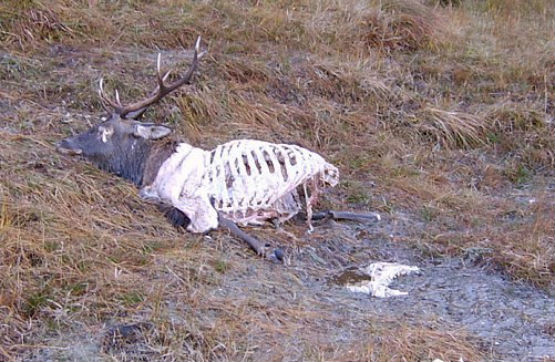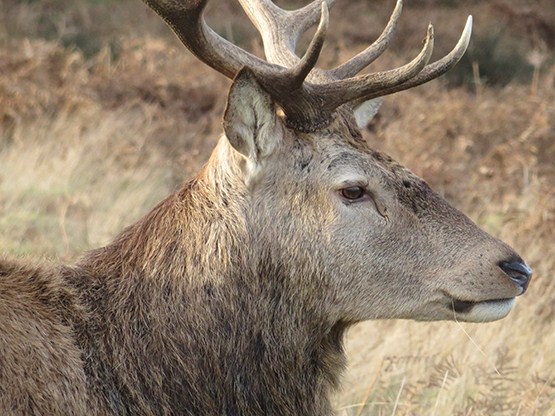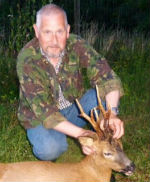Senior CIC Measurer Iain Watson looks at the outrage caused by the John Muir Trust following their slaughter of 86 Red Stags.

(Walkers were left horrified as many stags were left to rot on the open hill)
Generally articles on stalking concentrate on how the stalker can achieve their goals, maximise their sporting chances, and have fun during the seasons and cycles which take us through the deer year, this is not one of them. For all of us who stalk or have an interest in deer, our sporting lives, whether we recognise it or not, have been dominated by a period of deer population growth and political change, unseen, and unknown by our predecessors in the post war years.
Stalking it has to be said has become ever more popular, and ever more accessible in the last two decades. This growth is set against a background of ever more regulation and professionalisation of what was a pastime which was previously seen largely as an exclusive gentleman's recreation, or in the case of roe stalkers a safe home for the mildly eccentric!
From the stalkers perspective, change continues to visibly drive both land management and usage patterns. This is particularly true in Scotland, where a combination of politics, driven by the SNP government, through its Land Reform Legislation, and an ever growing charity sector is leading to a wholesale shift in land ownership and critically in management practices. At the same time an ever advancing tide of "greening" and ecological awareness is leading to deer in general and red deer in particular having their status reconfigured to that of a public enemy, in the eyes of some of our self appointed saviours of the environment, and make no mistake, where the red deer leads at the moment others, in particular the roe, will follow close behind.

In the northwestern highlands outrage was caused by the actions of the John Muir Trust whose slaughter of 86 stags was widely reported by the Scottish print media in December 2015. The animals had been shot and then left to rot on the open hill on a very small property in Knoydart, no doubt purchased on the proceeds of some well meaning legacy. Some had been decapitated, others had haunches removed, others lay as they fell. While some shooting organisation's called for the Edinburgh government to investigate,( they haven't) the John Muir trust attempted to justify its actions on the basis that red deer are overpopulated because of the management practices of sporting owners. They further claimed that as the species suffers high winter mortality anyway, they were behaving responsibly, before poking the powers that be, in Inverness, by complaining that as they had been denied an out of season licence they had to take the action they did.
Whatever, this episode is truly an affront to decency and responsible land ownership, and a poor reflection on the ethical standards of those who took the 30 pieces of silver from the John Muir Trust.
But let's be clear this type of treatment of the Monarch of the Glen is by no means an isolated or a new phenomenon. Though the JMT say they were denied an out of season licence, the same cannot be said for others, both public sector and private. Over the decades the Forestry Commission, its staff, and more recently its contractors, have accessed and used the out of season licence season to lethal effect. While ethics ensured that some rangers made their views known by declining to shoot month on month others, particularly contractors, paid on a per carcass basis did not, and do not. Then there are the so called charities, the self appointed guardians of our conservation future. Whether it's tree's or re-introductions of long lost fauna, they will relentlessly rattle the can and exclude or eradicate anything which they don't see as P.C. or part of their vision.
While "caring" for the landscape some have erected countless miles of subsided high tensile fencing, marching across hills and corries, fording the allt's and abhainn's of the Gaidhealtachd, and in doing so have locked out from their wintering area generations of deer, while often providing an attractant by way of more tree planting, leading to a need for more out of season licences...................
Yet if this were not trouble enough not only for the deer, but I venture for our future landscape, we then have the current Jewel in the Crown, community ownership. It might be popular to decry and condemn the sale of large estates to anyone, particularly non British Citizens, but the favoured alternative cannot bode well in the long term. Community ownership, or as the more cynical call it "Wind Turbines for All" moves along apace. While if you as a sporting owner had the temerity to submit an application for a hill track you would have been chased, no such rejection stands in the way of the aspiring community cooperatives all with long made up Gaelic names wanting to develop a wind farm. No your application will be as welcomed as the one you made for the cash to finance your community buy out in the first place. Great on one level, estate ownership for all, but who pays for it? And where will they be in two decades when those who drove the purchase have passed on or returned home, and the transient technology they invested in has passed its sell by date and lies redundant and rusting replaced by something which is not located on the hills and moors of our so far untouched countryside?
But back to the deer. The past stag season has seen some northern estates unable to meet their let quota, because they don't have enough stags. This they attribute to the persistent reduction of populations local to them. Experienced hill stalkers worry not only about the numbers of beasts either resident or moving through their patches but also about the age profile of the animals they find. Let's be clear the average age of the Scottish stag population is not high, in truth it's probably somewhere between 3 and 4 years old.
The Scottish red deer stands at the apex of our mammalian fauna. It is a recognised sub-species, for many it typifies the romance and grandeur of our island; it must not be used as a political weapon nor must its status and its value to us be reduced. Time for those major sporting organisation's who not only benefit but indeed rely on our financial support, to show their commitment and make their voices properly heard before our politicians, so called conservation organisation's, and charitable trusts see Cervus elaphus scoticus relegated to the status of vermin, while they continue to promote developments and re-introductions that in the long run can only be detrimental.

To read more from Iain as he goes in search of Roe Buck in the Oxfordshire countryside follow this link : heat-wave-buck



















